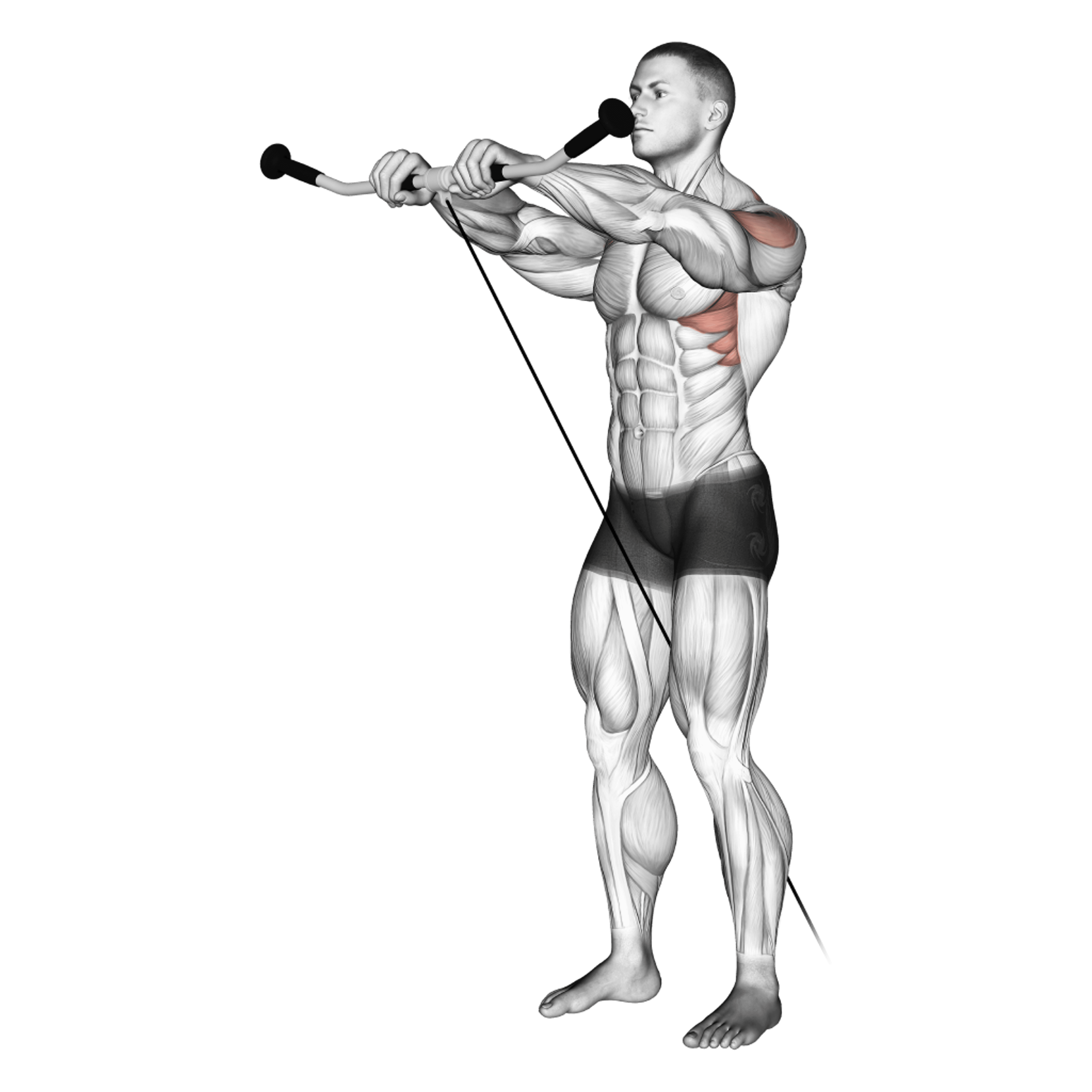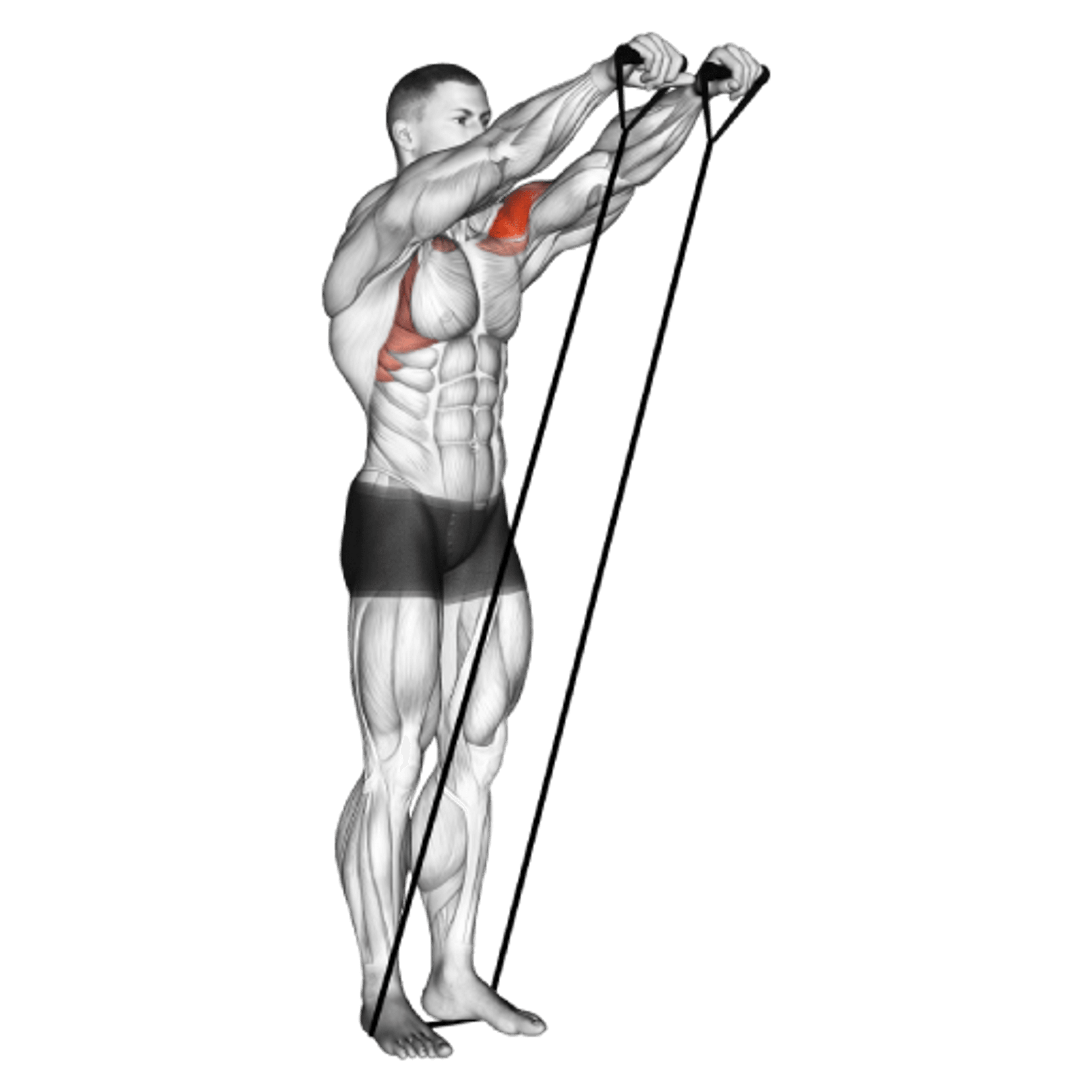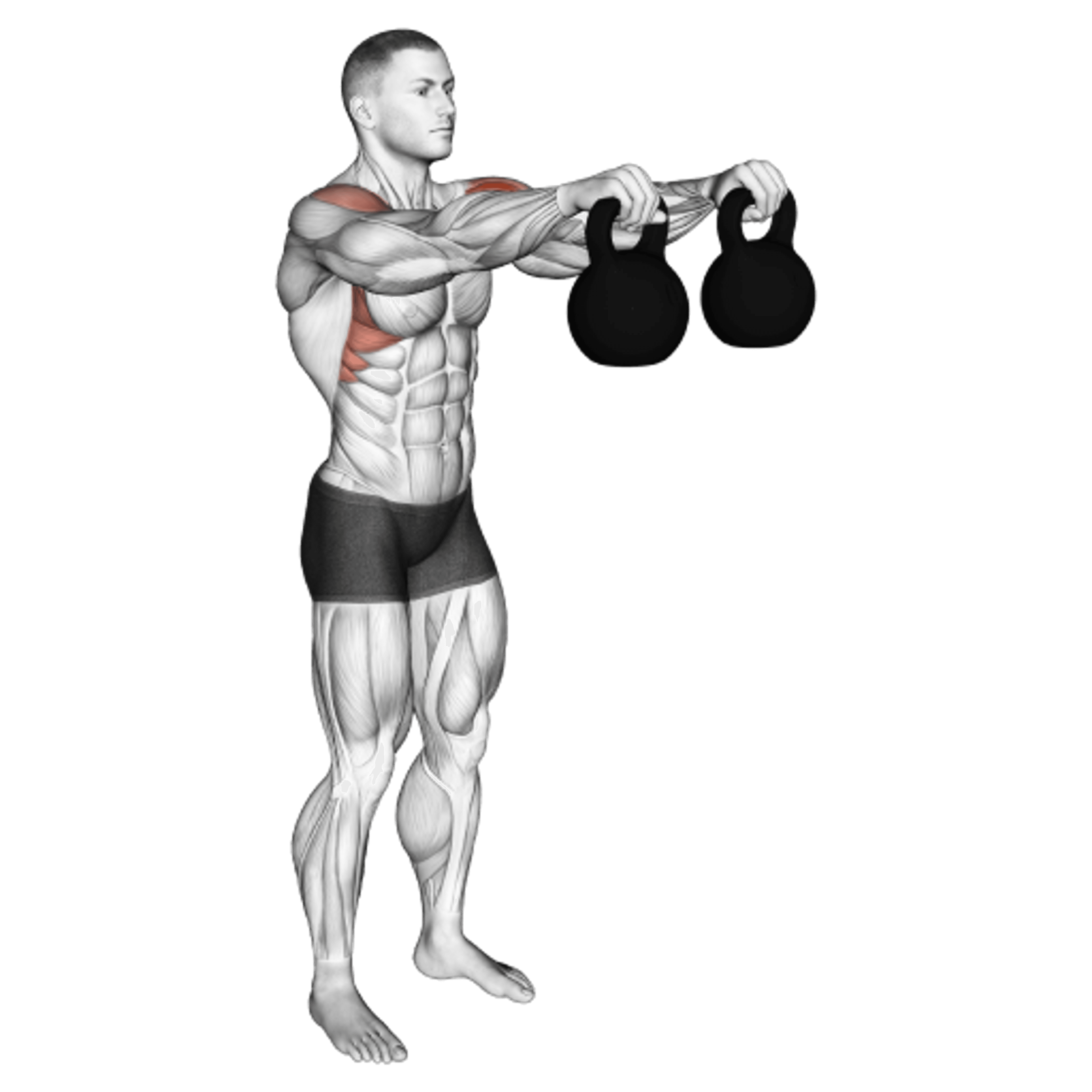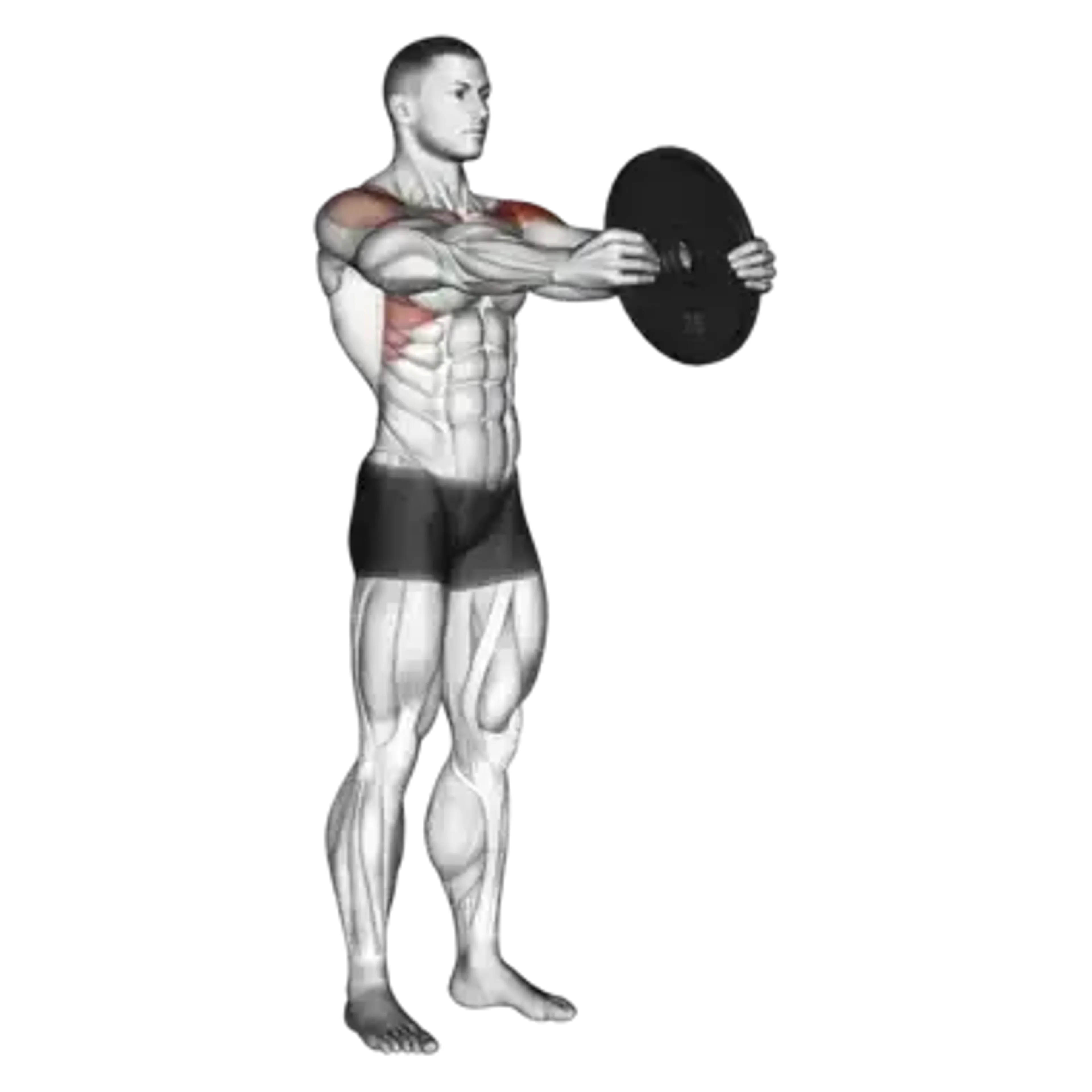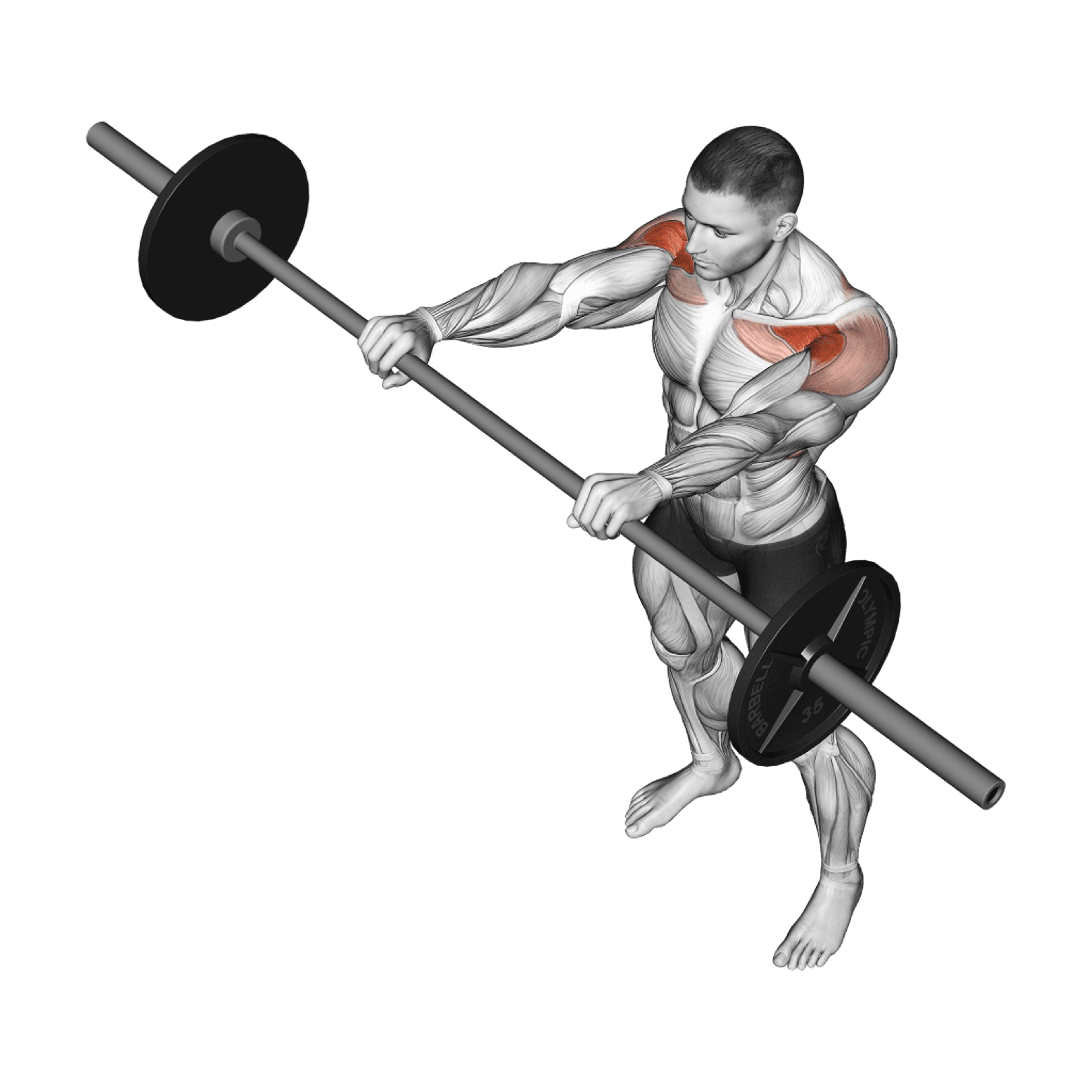Alternating Dumbbell Front Raise
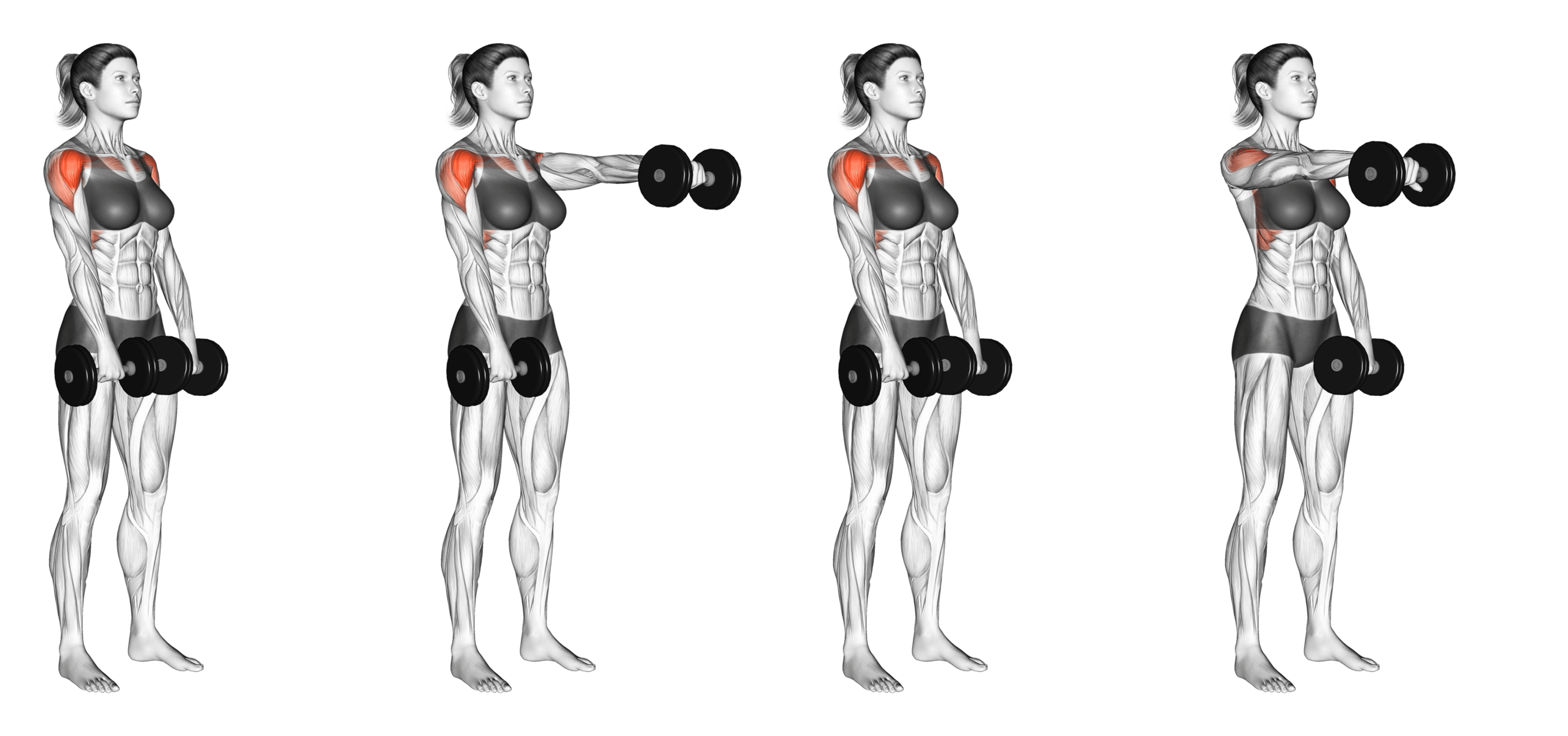
Overview
- Primary Focus:
- Shoulders.
- Equipment:
- Dumbbell.
- Difficulty:
- Beginner.
General Information
Alternating Dumbbell Front Raise is an isolation exercise that primarily targets shoulders. It is a beginner-level movement that emphasizes the anterior deltoids with a simple setup and clear loading progression using dumbbells at controlled tempos.
Alternating sides helps you stabilize the torso and manage fatigue while keeping the ribcage down. It’s a reliable accessory for shoulder hypertrophy, warm-ups before pressing, or as a lighter day movement when joints are sensitive to heavy barbell work.
You can perform it almost anywhere with a pair of dumbbells. Maintain a slight elbow bend and neutral wrist to keep tension in the delts; raising just to shoulder height typically maximizes stimulus without unnecessary neck or trap involvement.
Expect a concentrated burn in the front delts and some upper-pec contribution. If you feel your low back arching, reduce load and tighten your brace to keep the movement in the shoulders where it belongs.
Muscles Worked
- Deltoid
- Primary
- Pectoralis Major
- Medium
- Serratus Anterior
- Medium
- Erector Spinae
- Minimal
- Lower Trapezius
- Minimal
- Upper Trapezius
- Minimal
Instructions
- Stand tall with dumbbells at your sides, palms facing your thighs, feet hip-width, and ribs stacked over the pelvis. Brace lightly and keep the neck long.
- Raise one dumbbell forward with a soft elbow until the hand reaches shoulder height. Keep the wrist neutral and avoid leaning back to cheat the rep up.
- Pause briefly at the top to feel the front delt, then lower under control to the start without letting the weight swing behind your body line.
- Alternate arms while keeping the non-working side quiet at your side. Maintain the same range, tempo, and elbow angle on both sides for even loading.
- If you feel your traps take over, slightly depress the shoulders and reduce load. Stop the set once form or tempo deteriorates to preserve shoulder comfort.
Common Mistakes
Injuries
Alternating Dumbbell Front Raise is a low risk exercise when performed with proper technique.
Main strain points include the neck and low back when you lean back or shrug the shoulders. Keep ribs down, glutes lightly engaged, and elbows softly bent to keep tension in the front delts and out of passive tissues.
If discomfort builds, reduce range to shoulder height and slow the lowering phase. Regress to lighter loads or bilateral raises; stop if sharp pain, numbness, or radiating symptoms appear.
Alternative Exercises

Frequently Asked Questions
- Q: Neutral or pronated grip?
Both work. A neutral grip often feels more shoulder-friendly, while a slight pronation may help some lifters feel the upper pecs. Choose the option that keeps the shoulder centered and pain-free.
- Q: Better seated or standing?
Standing challenges bracing and balance; seated reduces cheating and isolates the delts. Use seated variation if your low back tends to arch or balance limits control at higher reps.
- Q: How often per week?
Two to three times per week works well for most. Start with 6–10 sets total weekly across variations and adjust based on shoulder recovery and performance trends.
- Q: Is slight elbow bend okay?
Yes. A soft, consistent bend protects the elbow and helps load the delts. Avoid curling the weight up or letting the elbow angle change during the set.
Overview
- Primary Focus:
- Shoulders.
- Equipment:
- Dumbbell.
- Difficulty:
- Beginner.
